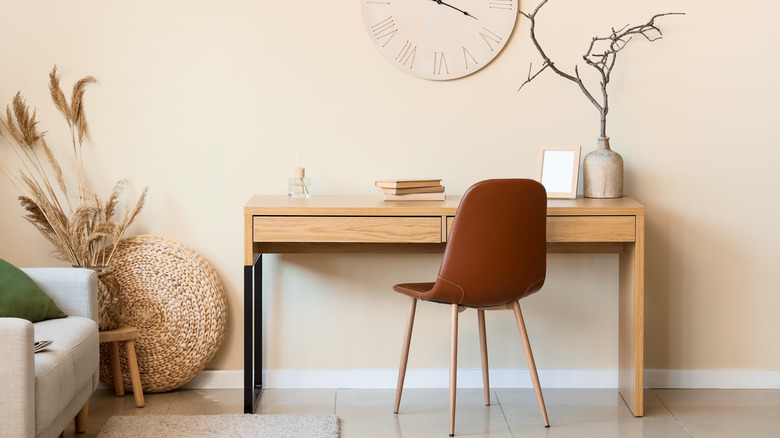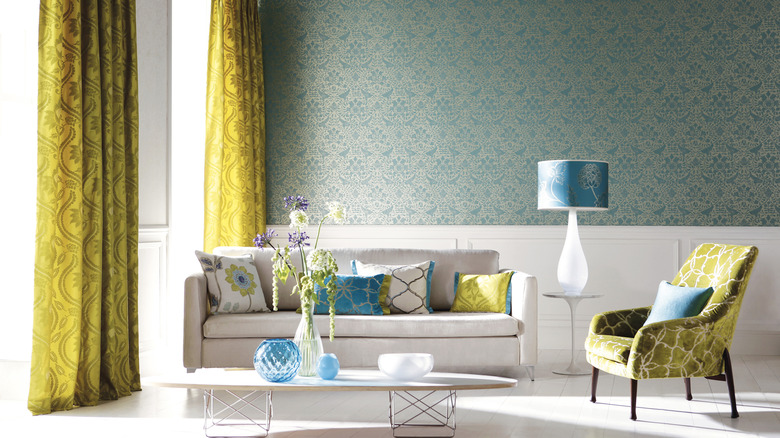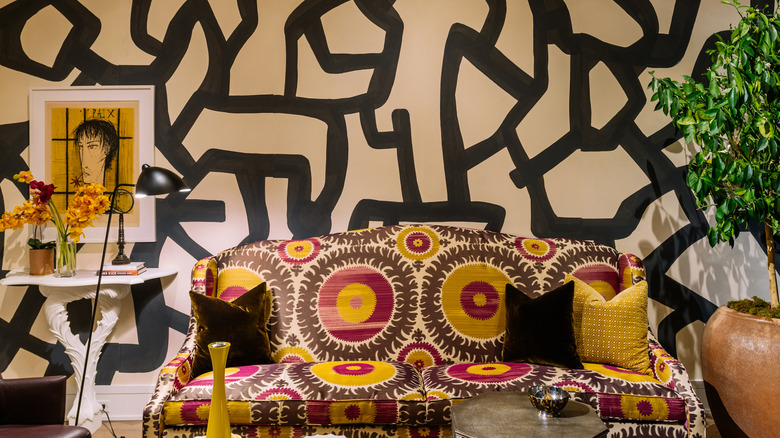The Biggest Wallpaper Trend For 2025 Means Beige Is So Over
When it comes to home styling trends, it can be hard to keep up with what's in and what's out. On the other hand, there are classic home décor trends that stand the test of time, like checkered floors you find in eclectic interiors or sleek furniture often associated with contemporary styles. But for the most part, many trends recycle themselves, and much of the resurgence in design has to do with nostalgia. As far as wallpaper goes, it's safe to say that the craze over beige walls, popularized in minimalism and Scandinavian aesthetics that boomed in the late 2000s and 2010s, is slowly fizzling out, and patterns, be they big and bold or whimsical and small scale, are taking their place as 2025's biggest wallpaper trend.
While neutrals, specifically beiges, are revered for their versatility and brightening up a space, their monotony can easily fall flat. In fact, many viral home décor trends you might see less of in 2025 include the likes of bland whites and Millennial gray, which are making spaces feel cold and sterile, rather than promoting comfort. Vibrant patterns — whether they're large-scale Art Nouveau motifs greeting you at an entryway or kitschy fruit designs adorning a kitchen — are a dramatic way of showcasing your personality and making a room more interesting. The upscaling done by these patterns can improve perceived spaciousness, boost visual intrigue, and add dimension to an otherwise bland space.
Choosing the right size of scale wallpaper pattern
It's true that in design, scale wallpaper can make a bold statement, but it can also overwhelm a space — unless specific elements of the space itself are thought about. For example, to learn how to personalize your space with patterns, you'll first want to consider the physical space of the room you want to incorporate patterns into. Generally, small-scale patterns can complement small spaces, such as bathrooms or home offices, while you may assign massive patterns to big rooms, like living and dining rooms. Small-scale patterns can help prevent a smaller room from looking cluttered by the patterned print, while large-scale patterns can connect a vast open layout and create a striking focal point.
On the other hand, the small-scale-small room and large-scale-large room rule isn't one that you necessarily need to follow for this trend to work; they can also work conversely. Using micro-scale wallpaper in a living room, for instance, can add depth to the space, while large-scale wallpaper in a bathroom, on the other hand, can enhance spaciousness. This is because oversized, mural-like patterns in a small room can elevate the perceptual space, making it appear bigger. Once you decide what size fits the space, you're on to deciding what kind of pattern best fits your style needs.
Design tips for adding a scale wallpaper pattern to your space
It should go without saying, but the wallpaper you choose for your space should flow with the rest of your interior style. Keep color, furniture, and other décor elements in mind when choosing your patterns. The beautiful thing about wallpaper is that it balances out a room and defines a focal point in the space. So, all of the elements in your space don't necessarily need to be consistent in order to be cohesive. For instance, you may think of prescribing large, freely scribbled patterns to a spacious living room. The home-made brushstroke reminiscent of Basquiat's artistic signature adds fun to a formal interior style, such as contemporary or minimalistic spaces. This can balance out neutral-colored furniture and décor pieces, adding bold visuals without overwhelming the space.
Alternatively, if your living room features a variety of antique, unique, or otherwise funky furniture, like you might see in a lot of maximalist designs, you may want to consider a small-scale pattern. This design technique can unify a larger space and make it feel more intimate and cozy. For that, you might want to add geometric, botanical, or mid-century modern patterns instead, which can add subtle texture to a room with furniture that draws people in.


